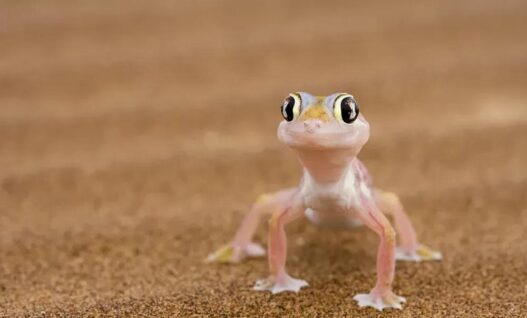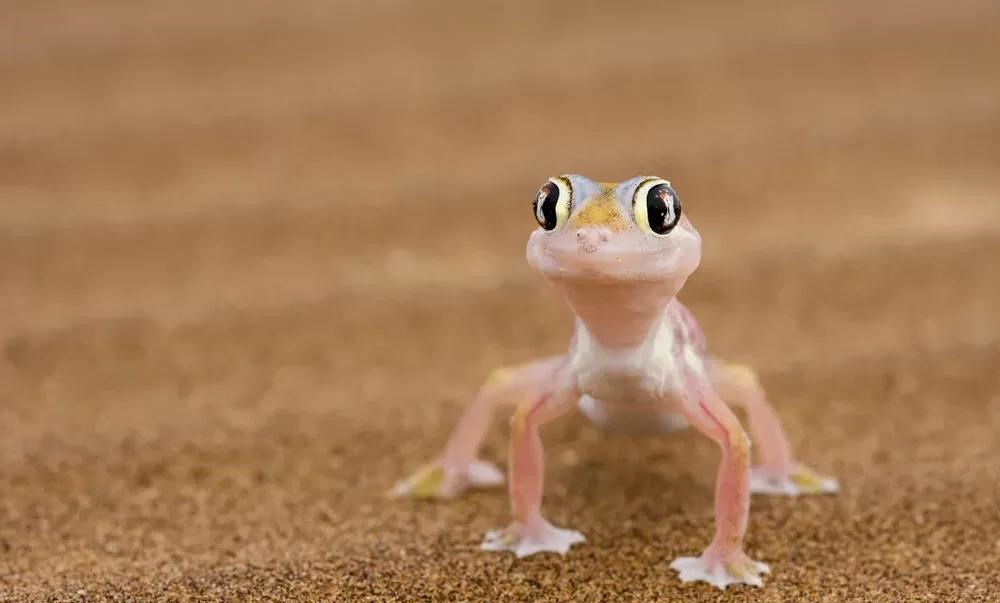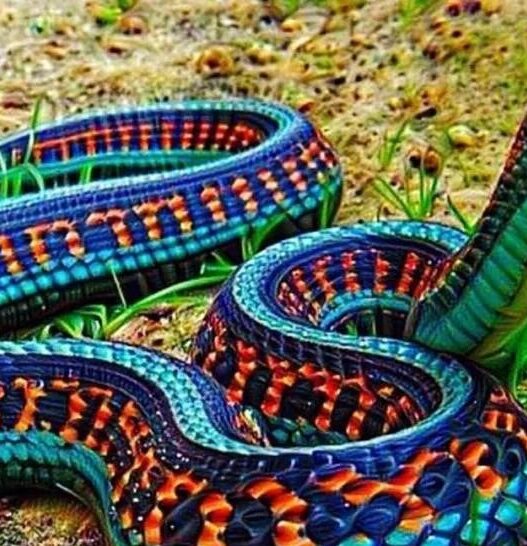Geckos are more than just creatures that can stick to walls and have appeared in insurance commercials. In fact, there’s so much more to these fascinating lizards, with over 1,100 species hiding extraordinary abilities. From gliding through trees to changing colors and even vocalizing, the gecko world is far more thrilling than most people realize.
1. Geckos Can Stick to Almost Any Surface – Except Teflon!
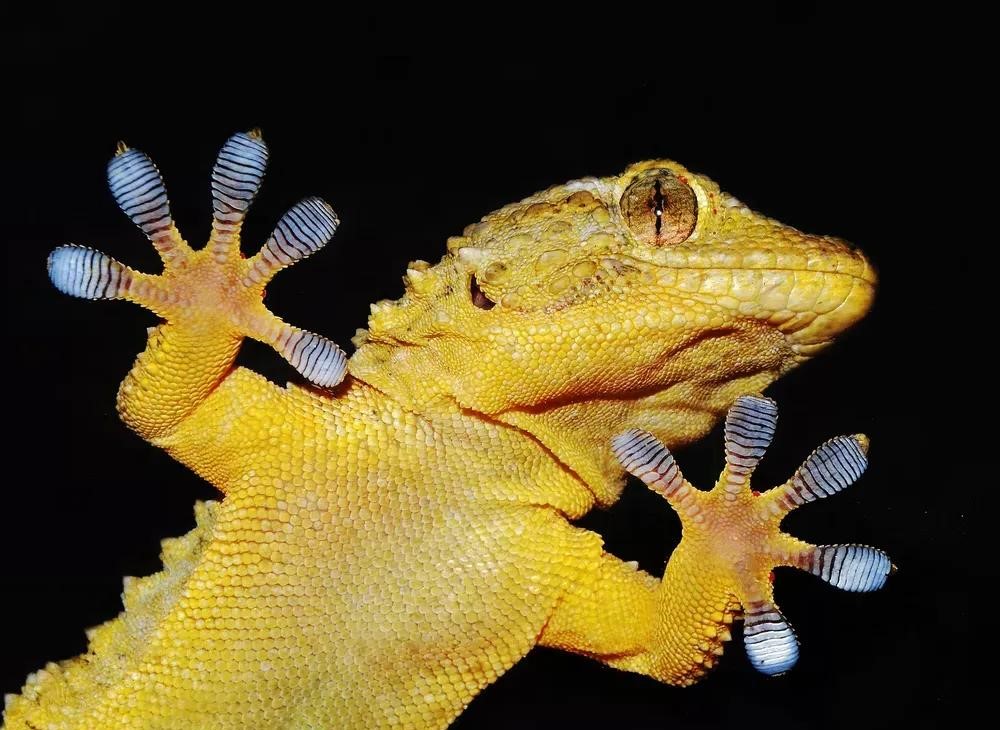
One of the most iconic abilities of geckos is their ability to easily climb smooth surfaces like glass or vertical walls. The only surface they can’t stick to is dry Teflon (the non-stick coating found on cookware). However, if Teflon is wet, geckos can still cling to it!
Geckos don’t rely on “stickiness” but instead use microscopic hair-like structures called setae on their toes. Each gecko has about 6.5 million of these tiny hairs, which together can hold the weight of two adult humans. This “stickiness” has inspired biomimicry in technology, from medical bandages to smart tires, which attempt to replicate the structure of gecko toes.
2. Geckos Have Night Vision 350 Times Stronger Than Humans
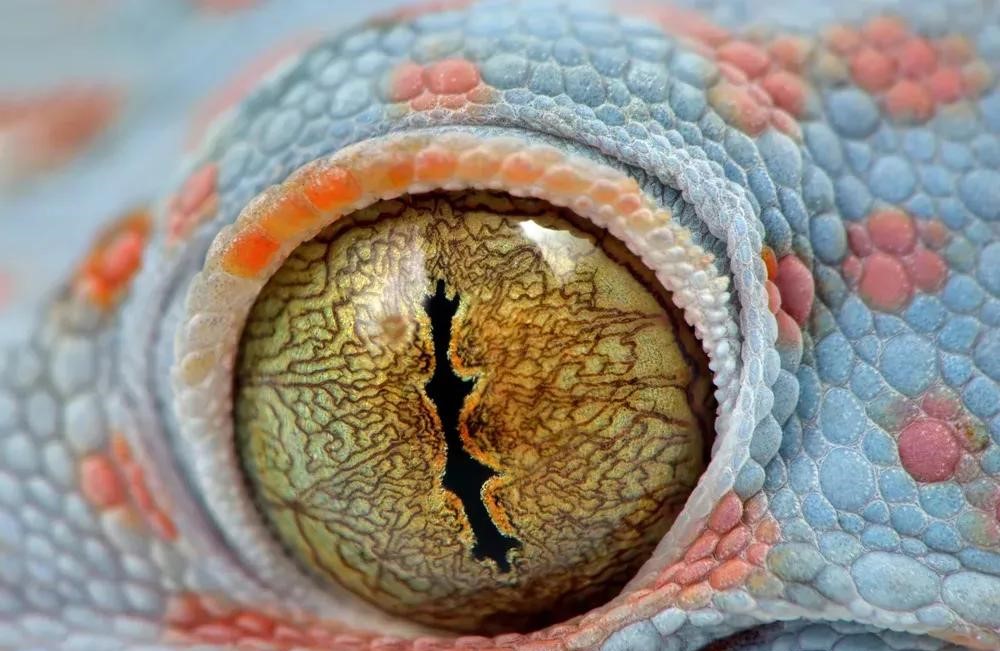
Most geckos are nocturnal creatures, with exceptional night vision. Research on the helmeted gecko has shown that it can still distinguish colors in dim moonlight, a time when humans are completely colorblind.
Their eyes are 350 times more sensitive to light than human cone cells, thanks to large cones and unique eye structures, allowing them to see a vibrant world even in the darkest conditions.
3. Geckos Can “Call” – And Even “Bark!”
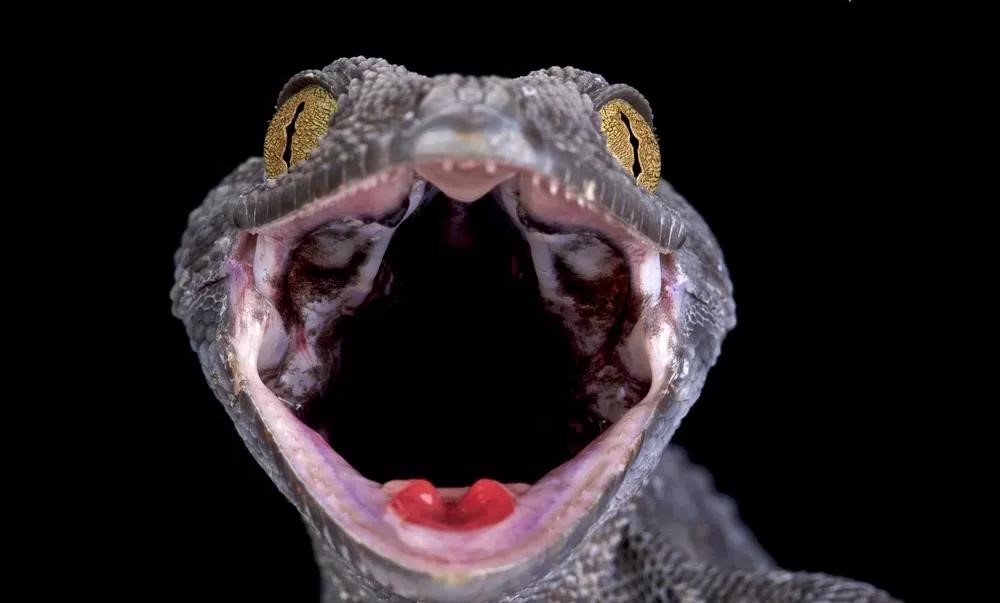
Unlike most reptiles, geckos can communicate by making sounds, including chirps, clicks, and even “barking.”
These sounds are often used to warn other geckos to stay away from their territory, avoid conflict, or attract mates. If you hear strange “chirping” sounds in the middle of the night, it might be a gecko saying hello!
4. Some Geckos Have No Legs and Look Like Snakes
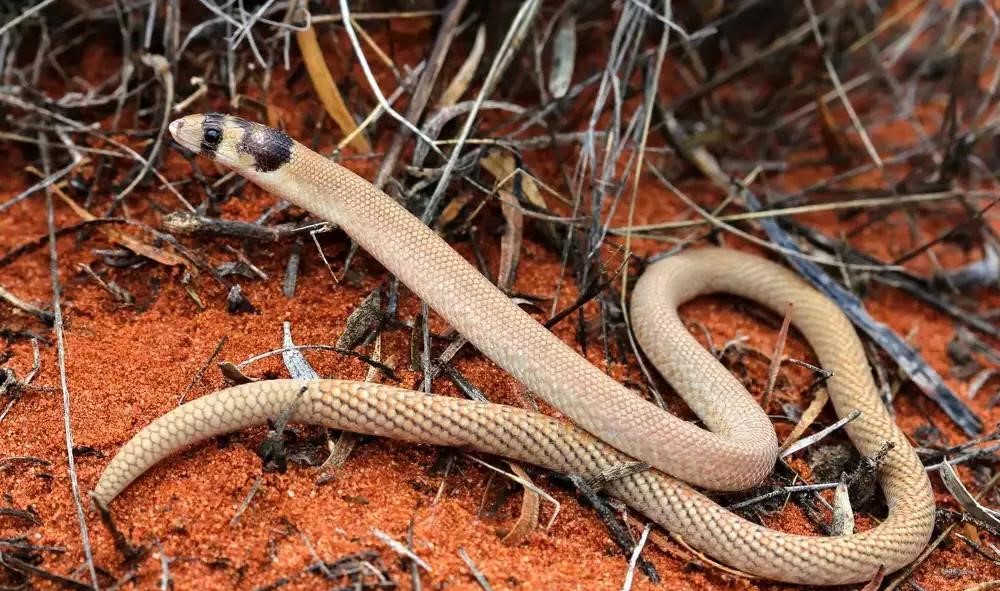
You may be surprised to learn that some geckos are legless, resembling snakes. The Pygopodidae family in Australia and New Guinea includes over 35 species known as “legless lizards” or “snake-like lizards.”
These fascinating creatures have lost their forelimbs and only have small remnants of hind limbs, but they remain geckos and can produce high-frequency sounds with exceptional hearing abilities.
5. Most Geckos Can Shed Their Tails to Escape Predators
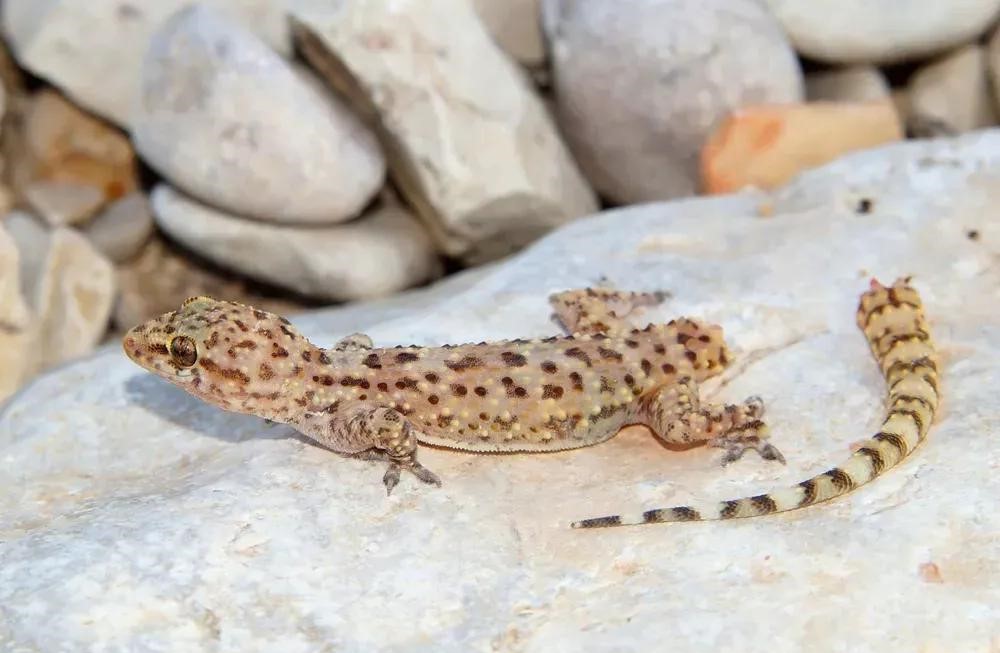
When threatened, geckos will intentionally shed their tails to distract predators, giving them a chance to escape. This tail-shedding mechanism is highly effective, with the tail detaching at a “preset” breaking point, causing minimal harm to the gecko’s body.
The detached tail continues to twitch, confusing predators. Afterward, geckos can regenerate their tails, though the new tail is typically shorter, blunter, and a slightly different color. However, some species like the Crested Gecko cannot regrow their tails.
6. A Gecko’s Tail is a “Energy Reservoir”
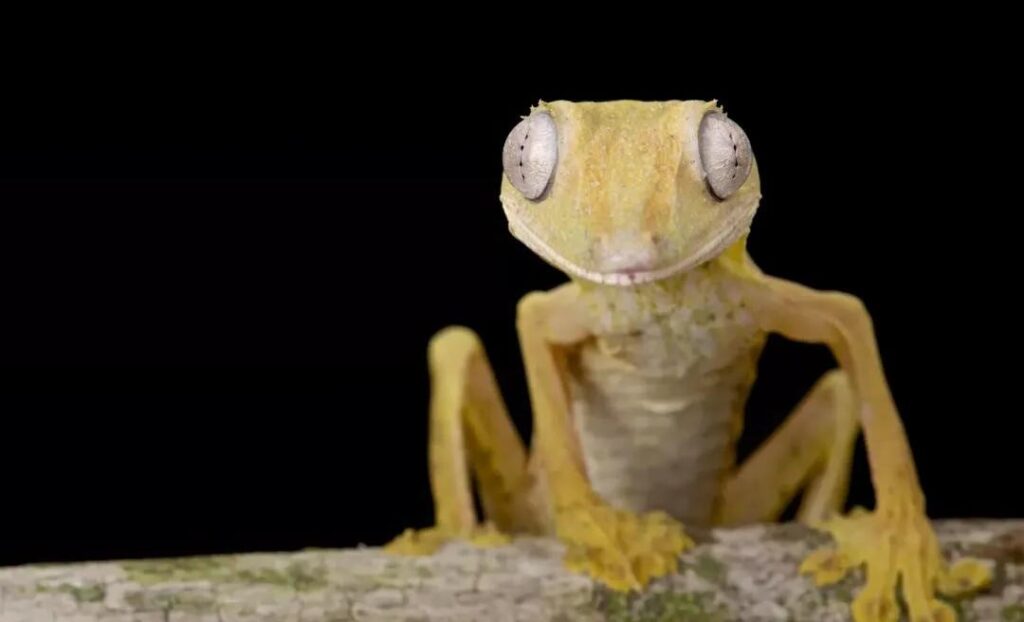
In addition to its escape function, a gecko’s tail also stores fat and nutrients. For many species, a plump tail signifies that the gecko has been well-nourished, while a thin tail could indicate illness or malnutrition.
Thus, a gecko’s tail is a key indicator of its health.
7. Geckos Can Live for Over 20 Years!
In the wild, the average gecko lives about 5 years. However, under the right care in captivity, certain species can live much longer.
For example, the Leopard Gecko can live 15 to 20 years in a pet environment, with some individuals reaching 27 years!
8. Most Geckos Don’t Have Eyelids and Clean Their Eyes with Their Tongue
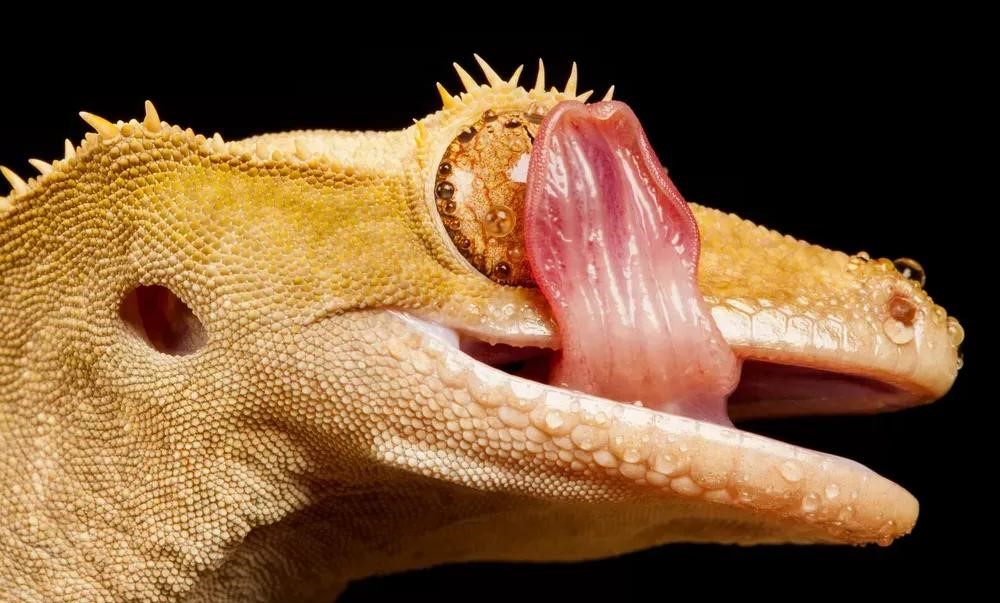
Unlike most animals, geckos don’t have eyelids and can’t blink. To keep their eyes clean and moist, they use their tongues to lick their eyes.
They are not licking the eyeball itself, but the transparent membrane covering it. While it may seem odd, it’s an incredibly practical solution for geckos.
9. Geckos Can Change Color for Camouflage
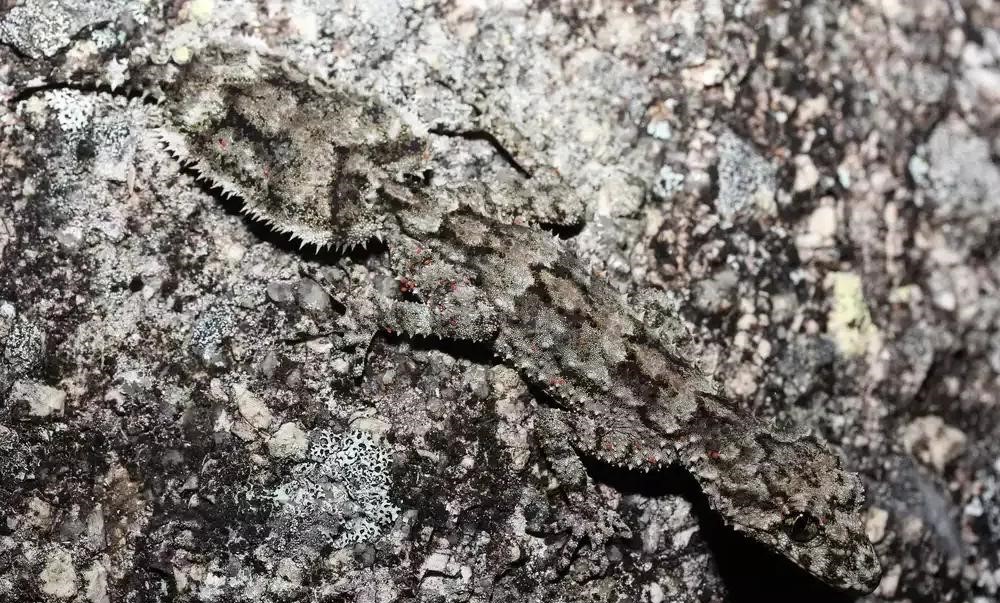
Similar to chameleons, geckos can change their colors too. Some geckos can even “automatically camouflage” without seeing their environment.
Researchers have found that the Moorish Gecko uses proteins in its skin, known as opsins, to sense light and determine its color change. Some geckos even have appearances that mimic moss, lichens, or rocks, perfectly blending into their surroundings.
10. The “Devil’s Leaf-Tailed Gecko”: Master of Leaf Camouflage
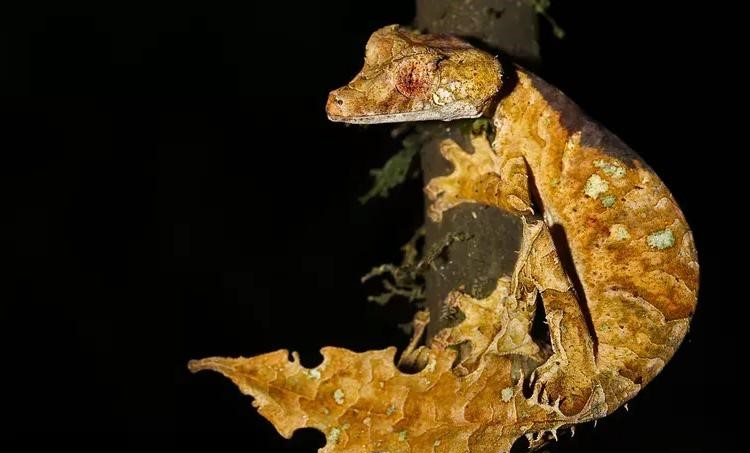
Native to Madagascar, the Devil’s Leaf-Tailed Gecko is a bizarre species that looks nearly identical to dead leaves. Its skin resembles leaf veins, bite marks, and even the shape of the leaf itself.
These geckos cling to tree branches, further enhancing their camouflage. Their incredible ability to mimic leaves makes them almost impossible to spot.
11. Some Geckos Can “Fly” Between Trees
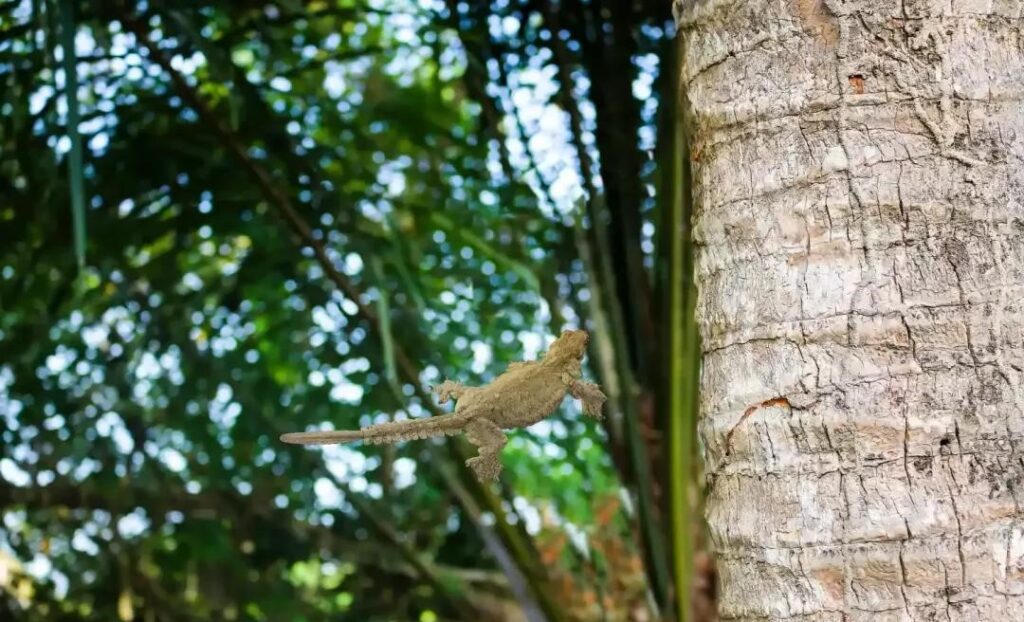
Southeast Asia’s “Flying Geckos” or “Draco Geckos” may not truly fly, but they can glide effortlessly from tree to tree using flaps of skin between their limbs and their flattened tails.
These geckos can glide up to 60 meters, though they typically grow to only about 15-20 cm in length. Despite their somewhat timid nature, they are popular in the pet market.
12. The Smallest Gecko is Less Than 2 cm Long
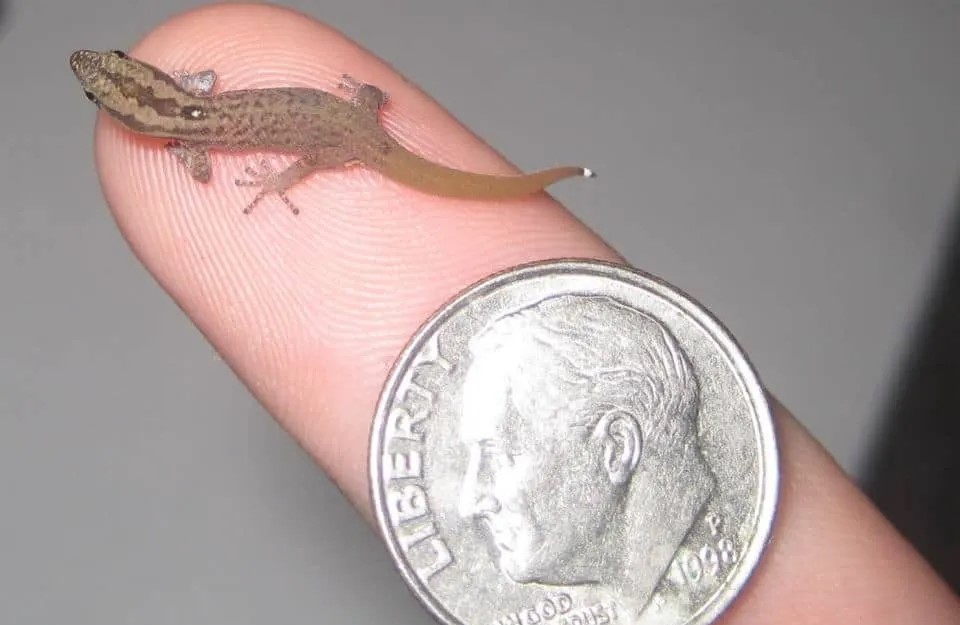
Despite some geckos being able to glide across the air, some are so small they can hide under a fingernail!
The Jaragua Sphaero and S. parthenopion geckos are less than 1.6 cm long and are among the smallest reptiles in the world. These miniature geckos, found only in the Jaragua National Park and Beata Island in the Dominican Republic, are rare and hold immense research value.
Conclusion
If you thought geckos were just your average household creatures that help with pest control, think again! The gecko family hides incredible evolutionary wonders and survival tactics that will leave you in awe. From flying and changing colors to vocalizing and regrowing tails, these little creatures are living miracles.







